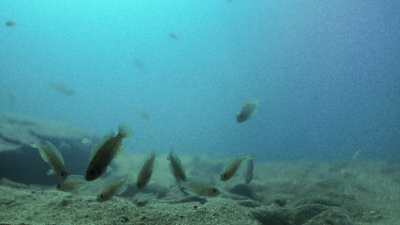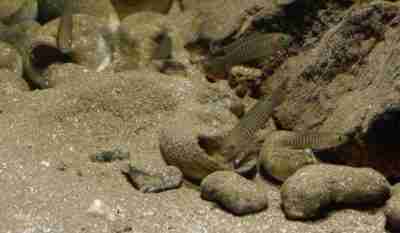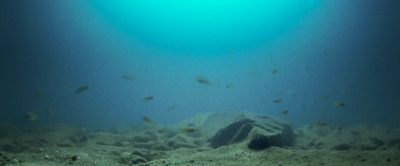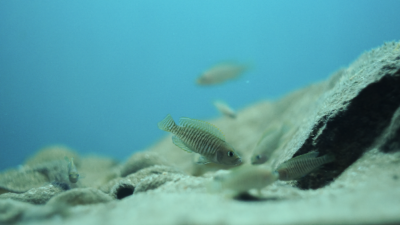by Walter Vázquez
Aquatic plants, fish, substrate, and hardscape.

Technical description: A biotope aquarium thought to be maintained over time can have a constant evolution from its initial planning because the more we investigate about the chosen biotope the more we want to approach the visual aesthetics and its naturalness. In addition, we discover elements during this period that will help us achieve it. For this, the proper choice of materials will be fundamental.
A key point to keep in mind is to understand that taking the time necessary to create a biotope aquarium is fundamental and very important. This accompanied by a good amount of time for maturation of the aquarium which will result in success.
This aquarium biotope of Lake Tanganyika is about 3 years old and went through several stages, previously representing the same area of the lake but with different habitat which shared 2 species; Lamprologus ocelllatus and Lamprologus multifasciatus.
Over time I was looking for greater viability because of the size of the aquarium and because the two species could no longer share it so I turned to maintain a large colony of Lamprologus multifasciatus redesigning the overall appearance towards a habitat other than the chosen biotope. Really very important in this type of aquariums; viability.
Tank Dimensions: 200 liters.
Lighting: Lighting of the aquarium is based on 6500K LED tubes and individual LEDs in the search for sub aquatic color temperature range. It was also important to find a way to simulate a visual effect of depth through the lighting and background of the aquarium. All this is supported by the natural behavior of this species which makes a perfect combo for all the natural appearance of the aquarium.
Filtration: It is filtered by an Atman 3336 canister with biological and mechanical material.

Hardscape: For the construction of this aquarium, I based it on photos and many hours of viewing sub-aquatic videos of the area, trying to faithfully recreate the characteristics of the soil both in color and its general appearance. Using sands with a volatile sedimentation that are capable of descending quickly to match natural conditions.
The choice of the sand and shells used was made in such a way that they are similar in size and functional to what the fish need to replace the Neothauma snail shells that are not available in my country.
Substrate – Sand and mixed shells.
Driftwood – None
Twigs – None
Leaf Litter – None.
Water Change:
Water Temperature: Water temperature is controlled by an Eheim Thermocontrol of 200w. Water temperature is constant at 24°C.

The water temperature of the lake is very stable, due to the large body of water. Surface temperature of Lake Tanganyika ranges from 23-27°C, and the hypolimnion temperature ranges from 23–24°C, although most fish inhabit areas with a temperature of 24-27°C.
Water Parameters: The water in Lake Tanganyika is alkaline, with a pH between 8.5 – 9.0 depending on the depth and alkalinity around 650µS. The parameters of the aquarium are very similar to those of the natural biotope. The pH value is 9.0 and the hardness of the water is 17dh. These parameters are achieved through the use of specific salts.
Fish: Lamprologus multifasciatus
This aquarium is inhabited by a species of shell dwellers. This is Lamprologus multifasciatus (Boulenger, 1906), a small species that form colonies around shell formations where a male lives and reproduces with several females. The parents live together with their young and care for the fry until they become young and then integrate into the colony.
Plants: None.
Fertilization Regimen: None.
Biotope description: Lake Tanganyika is the largest of the three large lakes of the African Rift Valley. Lake Tanganyika has 1,828 km of coastline, is the second largest freshwater lake in the world by volume, and the second deepest after Lake Baikal in Siberia.

This biotope aquarium represents the Ndole Bay area in Zambia, which is adjacent to Nkamba Bay in Nsumbu National Park on Lake Tanganyika. Ndole Bay is part of Cameron Bay. It is located at 8 ° 28’1.14 “S of latitude and 30 ° 28’29.45” E. of longitude.
At a distance of tens of meters, the habitats of Ndole Bay change drastically, and different species evolved to adapt to them. In front of the beach is found a habitat based on large rock and sand plates. Beyond these large rock plates begins a great plain of sand.
To the east, as the depth increases, the bottom of the lake has a new change with a dense area of sand and fine sediment with fields of Neothauma snail shells. About 200 meters from the beach is fine sand and sediment covered by a layer of empty shells of snails Neothauma tanganyicense.
This sector is represented in my aquarium, trying to resemble the habitat aesthetically and functionally to the cichlid species that inhabit it.
 Biotope One A Study of Flora and Fauna
Biotope One A Study of Flora and Fauna 


